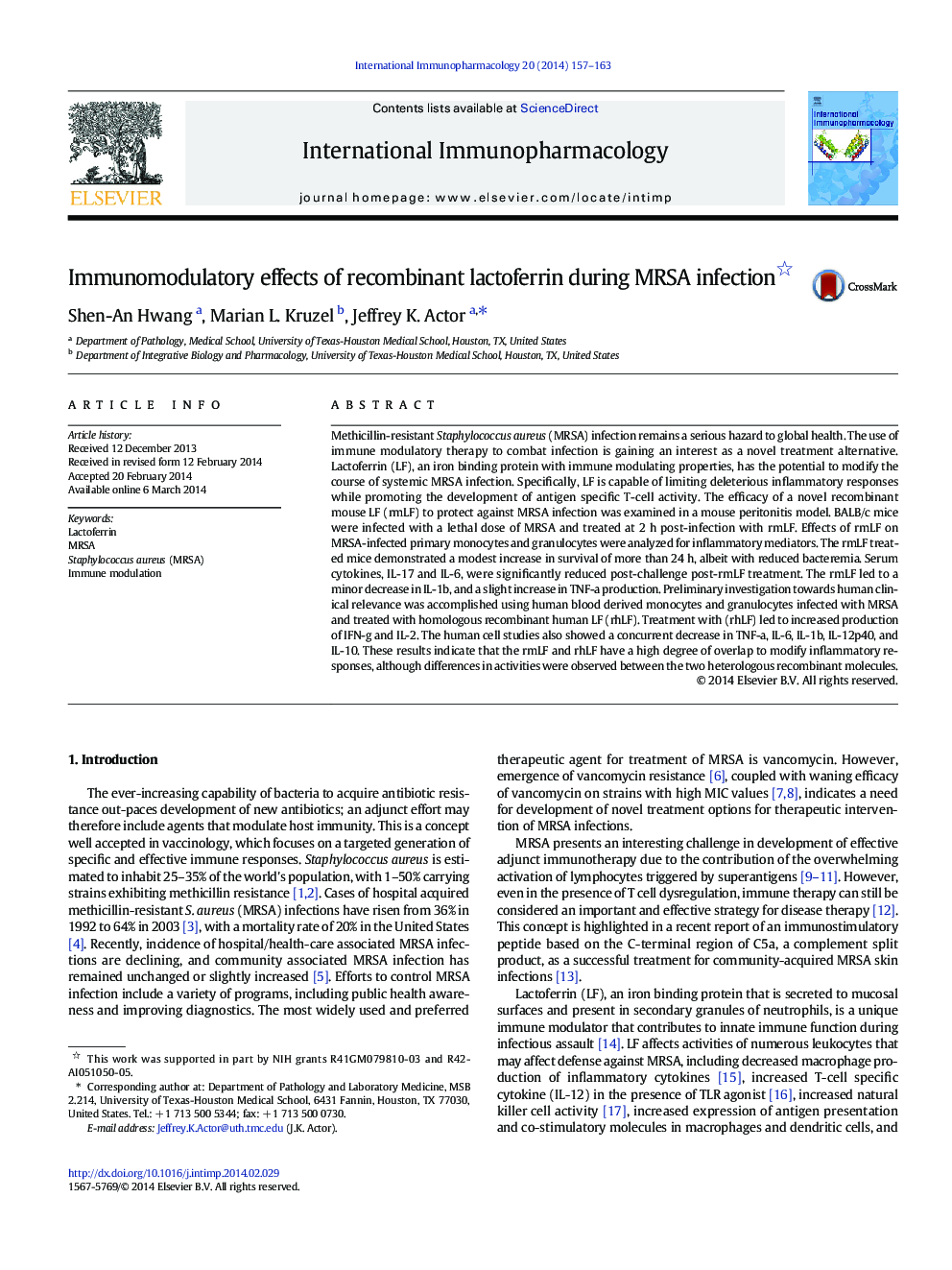| کد مقاله | کد نشریه | سال انتشار | مقاله انگلیسی | نسخه تمام متن |
|---|---|---|---|---|
| 5832824 | 1122610 | 2014 | 7 صفحه PDF | دانلود رایگان |

- Novel recombinant human and mouse lactoferrins (LF) were examined as modulatory agents during MRSA infection in mice.
- Modest protection against MRSA was elicited by recombinant mouse LF (rmLF).
- Serum cytokines, IL-17 and IL-6, were significantly reduced post MRSA challenge in rmLF treatment.
- The rmLF also led to changes in IL-1β, and a slight increase in TNF-α production.
- Human blood derived monocytes and granulocytes infected with MRSA and treated with a homologous rhLF led to increased production of IFN-γ and IL-2.
- Human cell studies also showed a concurrent decrease in TNF-α, IL-6, IL-1β, IL-12p40, and IL-10 post lactoferrin treatment.
- These results indicate that rmLF and rhLF have a high degree of overlap to modify inflammation, although some differences were observed.
Methicillin-resistant Staphylococcus aureus (MRSA) infection remains a serious hazard to global health. The use of immune modulatory therapy to combat infection is gaining an interest as a novel treatment alternative. Lactoferrin (LF), an iron binding protein with immune modulating properties, has the potential to modify the course of systemic MRSA infection. Specifically, LF is capable of limiting deleterious inflammatory responses while promoting the development of antigen specific T-cell activity. The efficacy of a novel recombinant mouse LF (rmLF) to protect against MRSA infection was examined in a mouse peritonitis model. BALB/c mice were infected with a lethal dose of MRSA and treated at 2Â h post-infection with rmLF. Effects of rmLF on MRSA-infected primary monocytes and granulocytes were analyzed for inflammatory mediators. The rmLF treated mice demonstrated a modest increase in survival of more than 24Â h, albeit with reduced bacteremia. Serum cytokines, IL-17 and IL-6, were significantly reduced post-challenge post-rmLF treatment. The rmLF led to a minor decrease in IL-1b, and a slight increase in TNF-a production. Preliminary investigation towards human clinical relevance was accomplished using human blood derived monocytes and granulocytes infected with MRSA and treated with homologous recombinant human LF (rhLF). Treatment with (rhLF) led to increased production of IFN-g and IL-2. The human cell studies also showed a concurrent decrease in TNF-a, IL-6, IL-1b, IL-12p40, and IL-10. These results indicate that the rmLF and rhLF have a high degree of overlap to modify inflammatory responses, although differences in activities were observed between the two heterologous recombinant molecules.
Journal: International Immunopharmacology - Volume 20, Issue 1, May 2014, Pages 157-163